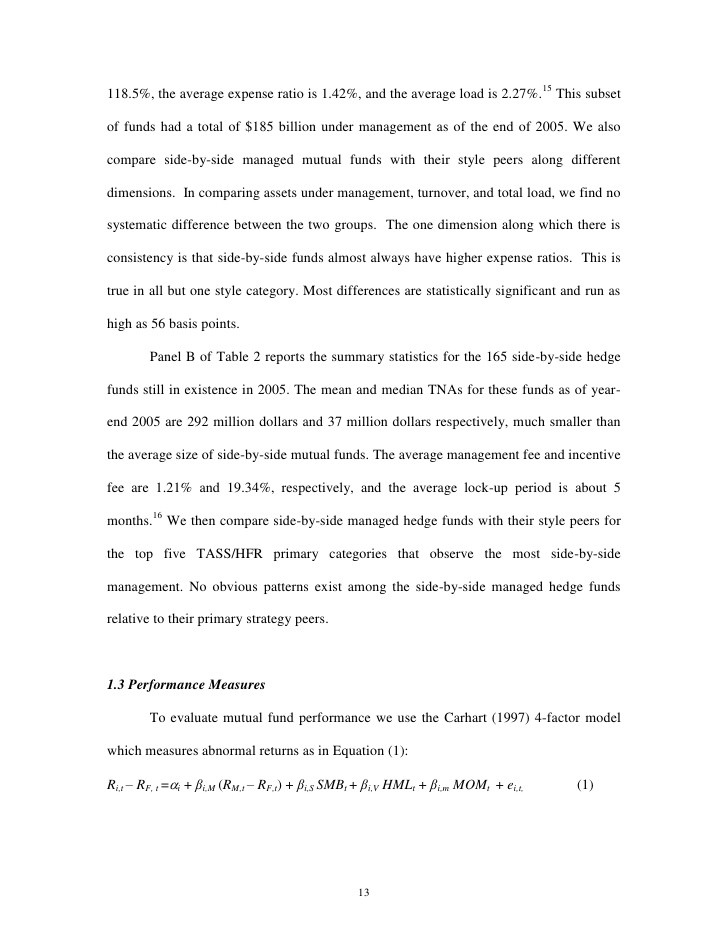Expense Ratio Turnover Rate and Manager Tenure
Post on: 7 Октябрь, 2015 No Comment

and Manager Tenure
Expense ratio, turnover rate and manager tenure are three key statistics that every mutual fund investor should use in screening, comparing and monitoring mutual funds. The expenses and turnover have a direct impact on net returns and manager tenure can indirectly influence a fund’s rate of return and consistency of returns.
The expense ratio. the management fee plus 12b-1 fee, may not look like much relative to the average rate of return, but over time it will have a serious impact on your actual return. Rates of return should be stated net of all fees but often are not. That is why I told you earlier, in Mutual Fund Returns. that returns should be computed using the beginning and ending NAVs, as the NAVs should be net of expenses, with distributions being added back in to the ending NAV to determine the total periodic return.
The expense ratio should include inside management and administrative costs, the cost of outside investment advisors, and the 12b-1 fee if one is charged. These costs are deducted incrementally throughout the year and are reflected in the NAV.
In the example of compound return that I used in the TVM subsection, there were two mutual funds with 12% average annual returns but one had an expense ratio of 1.25% and the other 0.75%. After 25 years, the fund with the lower expenses was worth 11.9% more than the one with higher expenses. If two funds are equal in every way except their expense ratios, choose the one with the lower expense ratio, as the differential will have a serious impact on performance over time.
Although a high expense ratio will impair a mutual fund’s performance, a fund should not be automatically screened out because it has a relatively high expense ratio. What should matter to you is the fund’s return net of expenses, i.e. return computed from NAVs. If a fund can beat its peers on a risk-to-return basis after expenses, it’s a winner. However, an expense ratio significantly higher than the category average should be carefully scrutinized.
A mutual fund’s turnover rate can hit you in two ways. First, the more a fund trades its securities, the higher its trading costs will be and trading costs diminish NAV in a way that is transparent to you, although it decreases your rate of return. Trading costs increase the cost of securities purchased by the fund and decrease the proceeds of sales by the fund, thus diminishing NAV.
Second, if you’re holding the fund in a taxable account, you’ll incur a capital gains tax liability for any trades that were profitable. It should be obvious that a mutual fund needs to be making significant profits on its trades to overcome these two costs. Certain types of mutual funds, like technology funds, do a lot of trading and thus have a high turnover rate. If a fund has a turnover rate higher than its category average but is not making above-average returns, you should probably look elsewhere.
As with the expense ratio, judge your funds by rates of return computed from NAVs, as NAVs are net of both the expense ratio and trading costs. A relatively high turnover is a concern but if a fund can beat its peers after all expenses, then its relatively high expenses may be justified.

Manager tenure. the length of time a mutual fund has been under the guidance of the current manager is a good indicator of stability in the fund’s investing strategy. If a manager has been in place for many years (10 years or more is good), the strategy employed by the manager will have passed the test of time and should be fairly consistent, and this consistency of strategy should translate to consistency in returns.
Co-management has become popular and is a form of insurance that there will be no sudden change in a fund’s performance due to a change in management. Presumably there is a consensus between the mangers as to how the fund should be run, so if one leaves, the other one can carry on in the same manner.
Sometimes you’ll find an assistant manager that is a protégé to the manager, which can be viewed as succession planning. When the manager retires, the protégé becomes the manager and continues to manage the fund in the same manner as it was previously managed.
Use the expense ratio, turnover rate and manager tenure in concert with the other key statistics to thoroughly evaluate mutual funds you are considering adding to your portfolio and for monitoring the mutual funds you hold in your portfolio.
1 2 3 4 5
Section Intro Next Section














